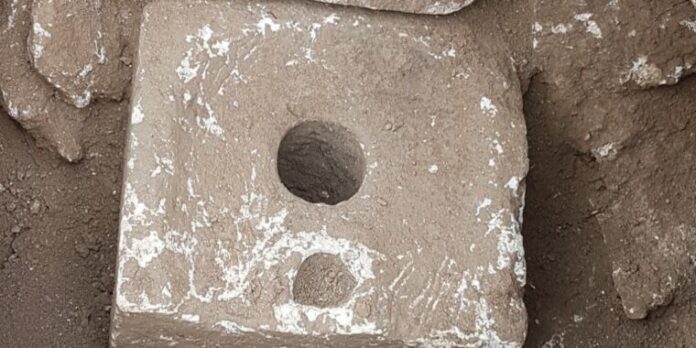Ya’akov Billig
Last year, we reported on an analysis of soil samples collected from a stone toilet found within the ruins of a swanky villa, revealing the presence of parasitic eggs from four different species. Conclusion: The wealthy, privileged elite of Jerusalem in the seventh century BCE were plagued by poor sanitary conditions and resulting parasitic intestinal diseases. Now scientists have found evidence of a parasite that causes dysentery in soil samples collected from that same stone toilet, as well as a second stone toilet from the same region that is nearly identical in design. The results appear in a new paper published in the journal Parasitology.
“The fact that these parasites were present in sediment from two Iron Age cesspits suggests that dysentery was endemic in the Kingdom of Judah,” said co-author Piers Mitchell, an archaeologist at the University of Cambridge. “Dysentery is spread by feces contaminating drinking water or food, and we suspected it could have been a big problem in early cities of the ancient Near East due to overcrowding, heat and flies, and limited water available in the summer.”
Archaeologists can learn a great deal by studying the remains of intestinal parasites in ancient feces. For instance, prior studies have compared fecal parasites found in hunter-gatherer and farming communities, thereby revealing dramatic dietary changes, as well as shifts in settlement patterns and social organization coinciding with the rise of agriculture. The domestication of animals, in particular, led to more parasitic infections in farming communities, while hunter-gatherer groups were exposed to fewer parasites and transmissible diseases given their nomadic lifestyle. This is even reflected in modern nomadic communities of hunter-gatherers.
There are references to intestinal parasites in many ancient texts from the Israel region, with the Fertile Crescent likely predating other regions for evidence of intestinal parasitic infection. But there is limited archaeological evidence of toilets in ancient Israel, with the earliest three examples dating back to the late Bronze Age—all located in palatial areas, indicating that toilets were a privilege afforded primarily to members of ruling groups. But there have been only two studies examining possible parasitic remains at any of the toilets found thus far, and only one of them reported the recovery of the eggs of intestinal parasites.
That changed in 2022. A few years earlier, the Israel Antiquity Authority began excavating the ruins of a large estate known as Armon Hanatziv, or the Commissioner’s Palace, dating back to the mid-seventh century BCE—i.e., the First Temple period, likely falling between the reigns of King Hezekiah and King Josiah. When the garden was excavated, archaeologists found evidence of a large water reservoir and a cubical limestone object with a hole in the center—likely the remains of a primitive toilet seat.


